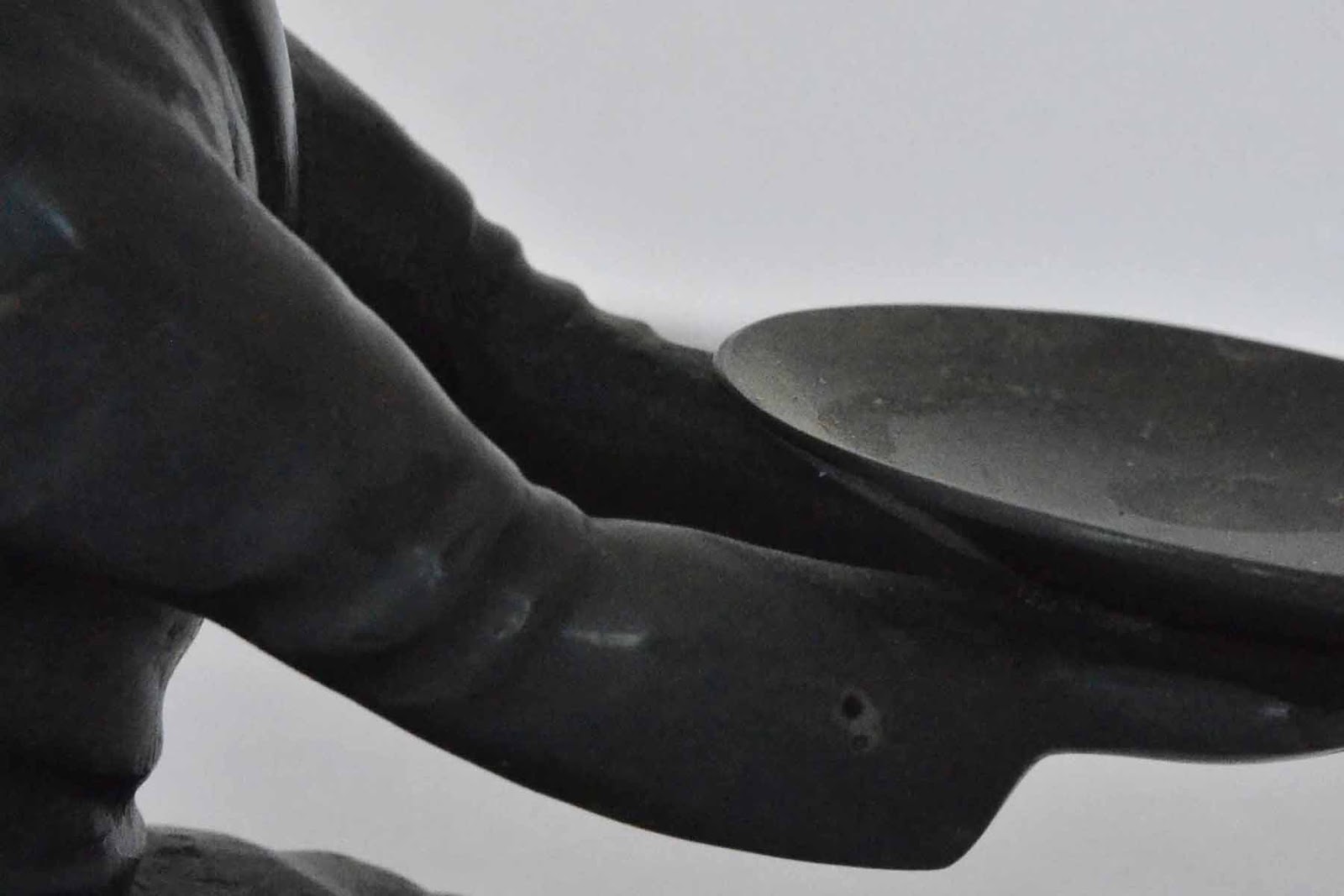ISO is the measurement of sensitivity to light, whether film or digital sensor. A low ISO is very insensitive and requires a lot of light. We can use a low ISO when we want the best possible image, usually with our camera mounted on a tripod. A high ISO (400, 800, 1600) is more sensitive and requires less light. We use a high ISO when photographing sports/action and need a higher shutter speed or when doing low-light, non-flash photography. A high ISO will cause more apparent grain and more digital noise with most digital cameras.
A standard ISO that one can use daily is ISO 100 it gives a clean and noise free image.
For this exercise I used a tripod throughout, a light box, natural light from a side window.
D7000 with 60mm lens
Manual setting
Auto white balance
I chose the cold cast figurine because it is a relatively smooth surface with areas where there should be shade and light areas. The features on the face are very minimal and simple and there is little detail. To look at it closely when holding it, there is a slight sheen and dark grey flat colouring.

Fig 1.
Base image - ISO 100.
Fine detail, little or no noise.
Fig 2.
ISO 200.
1/8th sec. f/11.0
Clean image
Fig 3.
ISO 400.
1/15th sec. f/11.0
More highlights and shade on this image, The hair is more defined, and folds of tunic can be seen more clearly.
Fig 4.
ISO 640
1/15th sec. f/11.0
Relatively low noise in this picture when enlarged.
Fig 5.
ISO 1000.
1/20th sec. f/11.0
More visible grain when enlarged. Also more detail throughout the image. the facial details are clearer, there seems to be colour appearing over the figurine.
Fig 6.
ISO 2000.
1/45 sec. f/11.0
Increasing the ISO is beginning to create some interesting effects.
Fig 7.
ISO 4000
1/45 sec. f/11.0
A noisy image which creates a gritty quality.
Fig 7a.
Enlarged area of image 7. Cropped to show that the higher ISO has lightened the image and made visible the colours in the metal which is not usually seen by the naked eye. Random speckles of blue, yellow and red are visible. Usually the image is inferior with this much noise, but I think the noise along with the use of printing on canvas would create a desirable acceptable print.
Fig 8.
ISO 6400.
1/180 sec. f/11.0
Again an image with much noise and on enlarging this image, the effect of such a high ISO has created another image with colour visible.
Fig 8a. Enlarged image of fig 8.
The occurrence of colour specks where there should be non.
The use of a higher ISO can be used when an image is required that does necessarily need to be clean and smooth.
I am surprised by my results as seen above, it is very clear to me that I have not understood the advantages of using various ISO Levels in differing situations. My images were taken in a well lit situation and I am now aware how advantageous it would be to use a higher ISO in a sport situation or badly lit scene. I did not on this occasion shoot handheld. I wanted to see the effect of high ISO, if these had been handheld, there would definitely be blur, caused by movement.
The colour specks really surprised me, as I cannot see them with a naked eye. That may be my poor eyesight though...









No comments:
Post a Comment